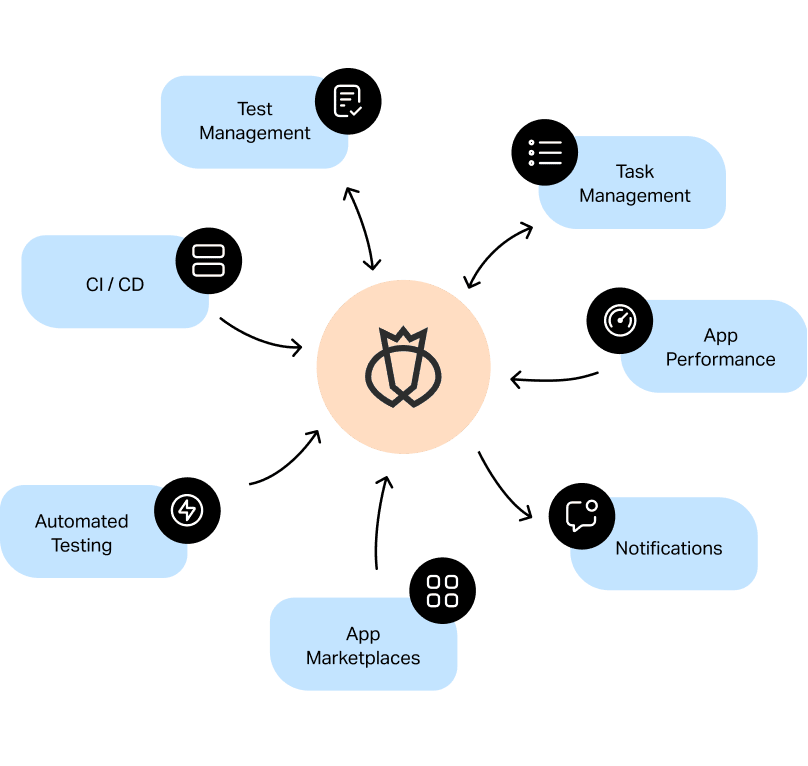Checking out the Future of Automation Testing in Software Program Growth
Checking out the Future of Automation Testing in Software Program Growth
Blog Article
From Manual to Automated Screening: A Comprehensive Overview to Transitioning Efficiently and Properly
In the world of software testing, the shift from manual to automated processes has ended up being a progressively vital transition for organizations seeking to enhance efficiency and precision in their testing practices. As technology remains to advancement, the need for seamless and effective computerized screening techniques has never been more important. The trip from handbook to automated testing is not without its difficulties, but when come close to purposefully and with a clear strategy in mind, the benefits can be substantial - automation testing. In this comprehensive overview, we will explore key actions and factors to consider necessary for an effective shift, from the preliminary choice of tools to the integration of automation right into existing process. Remain tuned to uncover the understandings that will help lead the way for a smoother and much more effective screening process.
Advantages of Automated Checking
Automated screening supplies various advantages, enhancing efficiency and accuracy in software application growth procedures. Automated examinations can be run at the same time on several gadgets and running systems, dramatically speeding up the screening phase compared to manual testing.
Furthermore, automated testing makes sure a greater degree of precision in detecting flaws. Since automated tests follow predefined manuscripts, human mistake is decreased, leading to more dependable test results. Consistency in testing is also improved, as automated tests execute the same actions specifically each time they are run. This uniformity is vital in making certain that all capabilities of the software are thoroughly evaluated, decreasing the likelihood of undetected pests sliding with to production.
Selecting the Right Devices

Firstly, assess your requirements and objectives. Recognize the extent of your task, the modern technologies entailed, and the ability of your team. This analysis will certainly aid you identify the capabilities and features you call for in your screening tools.
Secondly, think about the compatibility of the tools with your existing processes and systems. Smooth assimilation with your present software application advancement lifecycle is necessary to make sure a smooth shift to automation.
Additionally, evaluate the scalability and versatility of the tools. As your screening needs develop, the tools need to have the ability to adapt and suit modifications efficiently.
Lastly, consider the support and area around the tools. Robust assistance and an active user area can offer valuable sources and help when executing automated testing. By meticulously thinking about these elements, you can select the right devices that align with your demands and set the phase for a successful change to automated screening.
Creating Effective Examination Manuscripts

When crafting test manuscripts, it is vital to think about the certain requirements of the software program being evaluated and ensure that the manuscripts address all important performances. Descriptive and clear calling conventions for test scripts and examination cases have a peek here can enhance readability and maintainability. In addition, incorporating mistake handling mechanisms within the test manuscripts can help in determining and addressing problems promptly.
Additionally, arranging test scripts into modular elements can boost reusability and scalability, decreasing redundancy and boosting efficiency in test manuscript upkeep. Regular evaluations and updates to examine scripts are vital to equal evolving software application needs and functionalities. By following these concepts, testers can develop robust and effective examination manuscripts that contribute substantially to the success of automated screening procedures.
Integrating Automation Into Workflows
Reliable integration of automation tools into existing process enhances procedures and boosts efficiency within software application advancement cycles. When integrating automation into operations, it is critical to identify repetitive tasks that can be automated to conserve time and reduce human error. By seamlessly integrating automated screening devices like Selenium or Appium right into the software program growth lifecycle, teams can accomplish faster comments on code modifications, causing quicker insect detection and resolution. This integration enables continuous testing throughout the development process, ensuring that any issues are recognized at an early stage, leading to higher software top quality. In addition, automation can be made use of to activate examinations immediately after each code commit, providing prompt recognition and maximizing testers to concentrate on even more complicated situations. Proper assimilation of automation devices needs collaboration in between growth, testing, and procedures groups to establish a unified operations that enhances efficiency and efficiency in providing top notch software application products.
Making Certain a Smooth Change
Successfully transitioning to automated testing entails meticulous planning and cautious implementation to minimize interruptions and take full advantage of performance in the software development process - automation testing. To make sure a smooth change, it is necessary to start by carrying out a detailed assessment of the current testing processes and identifying locations where automation can bring one of the most substantial advantages. Involving with all stakeholders early on in the process, including developers, testers, and project managers, is important for gathering support and buy-in for the automation effort
Communication is crucial during this i was reading this change stage. Clear interaction of the goals, benefits, and assumptions of automated testing assists to take care of any kind of resistance or problems that might emerge. Furthermore, giving adequate training and sources for team participants to upskill in automation tools and methods is important for ensuring a successful change.

Final Thought
Finally, transitioning from manual to automated testing provides many advantages, consisting of raised performance and integrity. By picking the appropriate tools, writing effective test scripts, and integrating automation perfectly into workflows, organizations can guarantee a successful and smooth transition. It is necessary to accept automation as an important asset in software testing processes to improve total top quality and performance.
In the world of software application testing, the shift from manual to automated procedures has actually come to be a progressively crucial shift for organizations looking for to improve effectiveness and accuracy in their screening techniques. Automated examinations can be run concurrently on multiple devices and running systems, substantially speeding up the screening phase compared to hand-operated testing. Consistency in screening is likewise enhanced, as automated tests implement the exact same steps precisely each time they are run.To make certain the successful implementation of picked testing devices, the development of effective examination scripts plays a crucial duty in verifying the functionality and performance of automated processes - automation testing. By visit the site complying with these principles, testers can develop robust and reliable test manuscripts that contribute significantly to the success of automated screening processes
Report this page